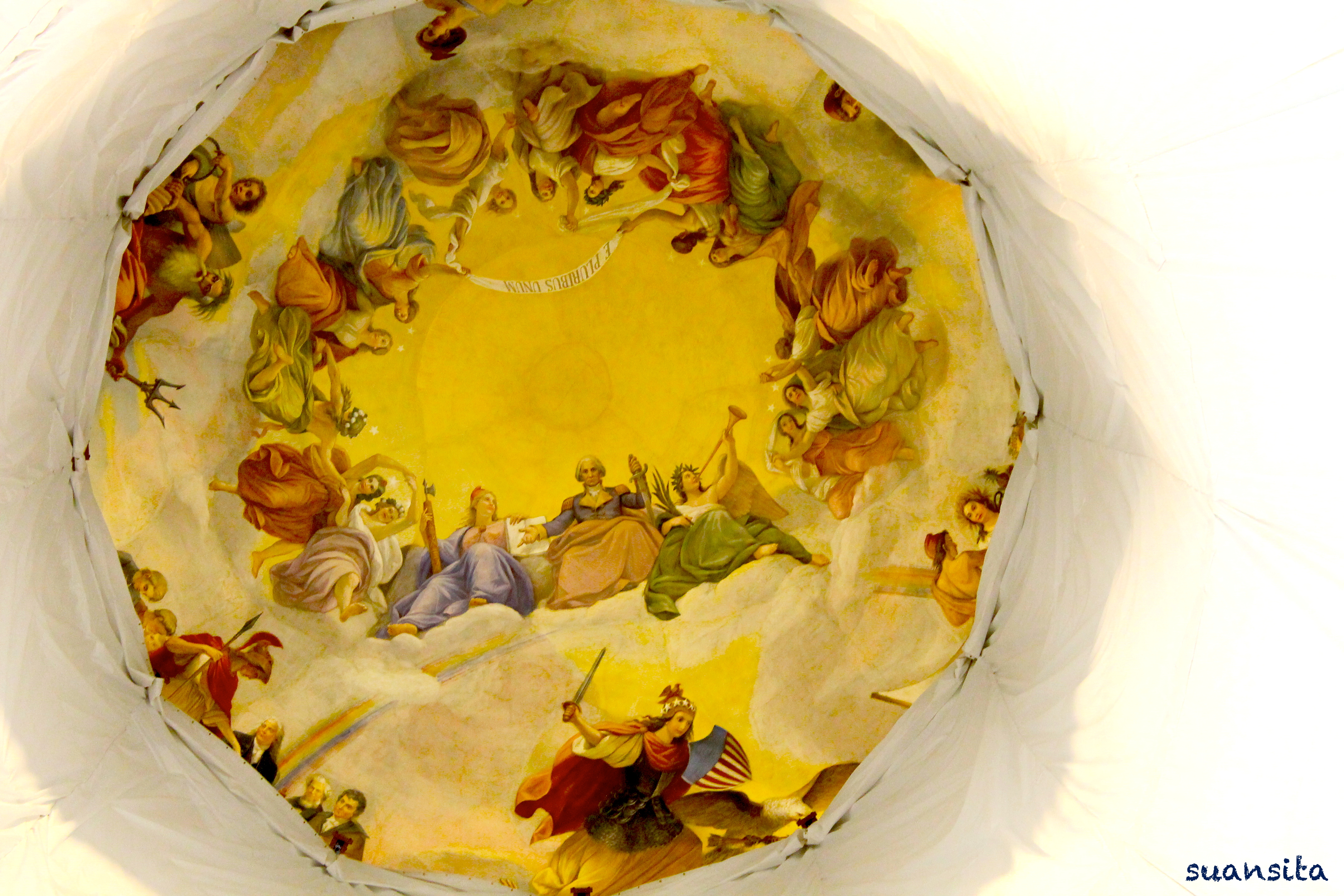If I could choose two words to describe Washington, D.C., they would be EMPIRE and EXTRAVAGANCE.
Perhaps they are two words that historically have gone hand in hand: the latter both reinforces and is a projection (and perhaps a symptom) of the former. In twentieth century history and politics classes we often discussed the USA’s imperial character. All the monuments and memorials I saw in DC last week seemed to reflect this narrative in a wonderfully graphic way – especially given at least some of them were constructed before the US became a global power.
The seat of the United States parliament is indicative. This and the Washington Monument (a loathsome obelisk that begs to be photographed) dominate the city’s skyline.

The centrepiece of the Capitol is the Rotunda with its soaring cupola. It’s deliberately reminiscent of Europe’s most majestic cathedrals, right up to the fresco that covers the interior of the dome. Yet what is most remarkable about the piece is not so much its style or size but the presence of one particular figure: against the backdrop of a pale citrus sky, up amongst the Greek deities, is none other than George Washington himself. The Apotheosis of Washington. Man as god. Politician as god. Christian as god. American as god.

The other bizarre juxtaposition of Christian leadership and Greco-Roman paganism is the Lincoln Memorial, essentially a temple to the much-loved president. It is a massive neo-classical structure. There is a massive statue of a seated Abraham Lincoln (who was, incidentally, also massive at 6’4”). There are massive letters reproducing the entirety of his famous Gettysburg speech on the walls of the memorial.

Other sights in DC are similar: the Washington Monument; the Supreme Court; the Tomb of the Unknown Soldier at the Arlington National Cemetery; the World War II Memorial; the Library of Congress.
Amongst the grandeur of Washington’s monuments, I can think of one notable exception. The 9/11 memorial at the Pentagon is simple, sobre, touching. We know that 9/11 changed our world, shifted a paradigm – I like to think that the memorial, in drawing from that tragedy, is a beautiful and dignified response of humility over hubris.




1 comment